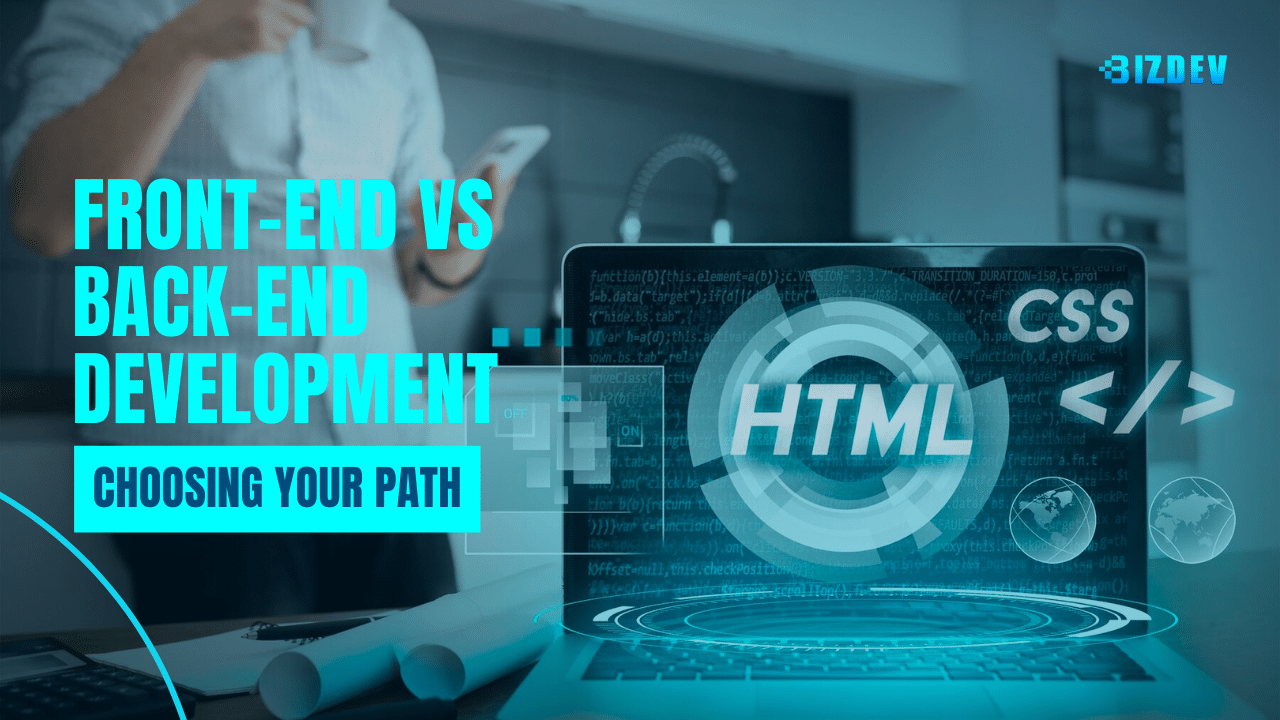Front-end and back-end development are two essential components of web development. If you’re new to programming, you might be wondering which path to pursue first. In this article, we’ll explore the differences between front-end and back-end development and help you make an informed decision about where to start your journey.

Understanding Front-End Development
Front-end development focuses on the user-facing aspects of a website or application. It involves designing and implementing the visual elements and user interfaces that users interact with. Front-end developers are responsible for creating an engaging and intuitive user experience.
The Role of Front-End Programming Languages
To excel in front-end development, you need to be proficient in the following:
- HTML: Provides the structure and content of a web page.
- CSS: Used to style and format the page.
- JavaScript: Adds interactivity and dynamic functionality to the website.
Front-end frameworks such as React, Vue, and Angular are also valuable tools for front-end developers. These frameworks simplify and speed up the development process by providing pre-built components and libraries.
Getting Started with Front-End Development
If you’re interested in pursuing front-end development, start with a strong foundation in web development fundamentals. Learning HTML and CSS is a great starting point, as they form the building blocks of every web page. Once you’ve mastered the basics, dive deeper into front-end development by learning JavaScript. Understanding JavaScript will enable you to create dynamic and interactive web pages. Consider following the Front-End Engineer Career Path on Codecademy for a comprehensive learning track that guides you through all the necessary skills and technologies needed to become a proficient front-end developer.
Exploring Back-End Development
While front-end development focuses on the user interface, back-end development handles the behind-the-scenes processes that power a website or application. Back-end developers create and maintain the server-side logic, databases, and APIs that enable the front-end to function seamlessly.
Back-End Programming Languages
Back-end development involves working with various programming languages. Some popular options include:
- JavaScript (Node.js): Enables building server-side applications.
- Python, Ruby, PHP, and Java: These languages allow developers to handle data processing and storage.
In addition to programming languages, back-end developers also work with databases such as MySQL, PostgreSQL, MongoDB, and Redis.
Choosing Your Path
Ultimately, the choice between front-end and back-end development depends on your interests and strengths. Here are some considerations:
- Front-End Development:
- If you enjoy creating visually appealing interfaces and user experiences, front-end development may be your path.
- You’ll work closely with designers and focus on the client-side of web applications.
- Ideal for those who love working with HTML, CSS, and JavaScript.
- Back-End Development:
- If you’re intrigued by server-side logic, databases, and APIs, back-end development might be your calling.
- You’ll handle data processing, security, and scalability.
- Ideal for those who enjoy problem-solving and working with programming languages beyond the browser.
Remember that both front-end and back-end development are essential for building robust and functional web applications. Many developers choose to specialize in one area while having a basic understanding of the other. Whichever path you choose, continuous learning and staying up-to-date with industry trends are key to success in the ever-evolving tech world.
So, whether you’re drawn to the visual or the technical aspects, embrace your chosen path and contribute to shaping the digital landscape!
